by Ian Stephenson, Planning Convenor in Glebe Society Bulletin 10 of 2020
In November the NSW Government released the Franklyn St, Glebe, redevelopment proposal. This is described as a preliminary concept which is being circulated for community feedback. The scheme is to demolish the existing 108 social housing units and replace them with 425 units of which 130 will be for social housing.
Context
The Franklyn St estate is located between Franklyn, Glebe and Bay Sts. It is over 1.3 hectares in area, with one-third of a kilometre of street frontage on Franklyn, Glebe and Bay Sts. All the current street frontages address heritage conservation areas in which there are a number of individually listed heritage buildings. It is situated within the Mountain Street Heritage Conservation Area [HCA] and adjoins the St Phillips HCA. Its size and location make it a key site linking the low rise Victorian residential character of Glebe with the historic warehouses which define Ultimo. This gives it great strategic importance in contributing to and defining the character of the area and its streets.
Franklyn St
The estate was designed by Philip Cox and John Richardson of Cox Richardson architects in the late 1980s. It comprises a series of stepped forms interspersed amidst gardens. Approximately 40% of the site is soft landscape.



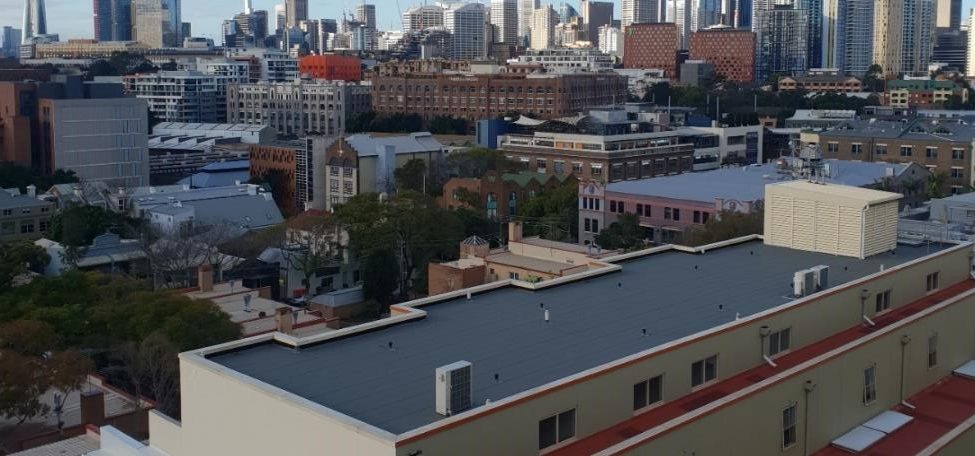
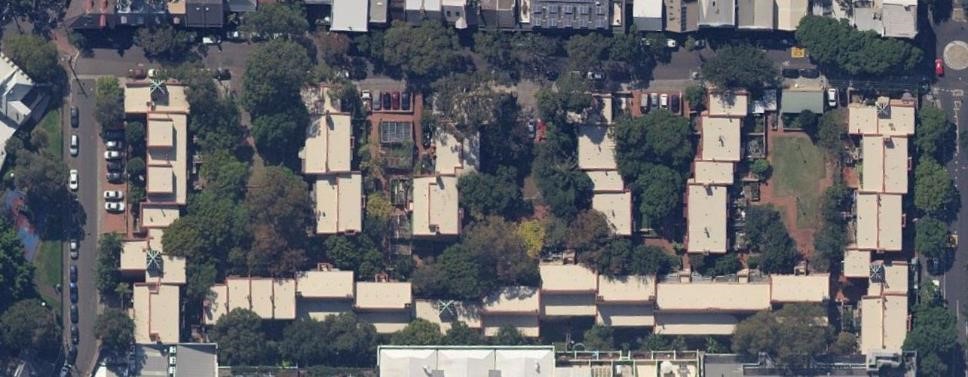
The Redevelopment Proposal
The scheme involves increasing the number of dwellings from 108 to 325, a 350% increment. In order to accommodate this the current height limits will be increased from 15 metres to 42 metres, a factor of 280%, the Floor Space Ratio [FSR] will be increased to 2.5:1 and the open space at ground level will be reduced by nearly half. The existing gardens will be used for new roads which, in an exercise in Orwellian double speak, are called ‘living streets’.
Its form, scale and impact can be understood from Figures 9-13 below.
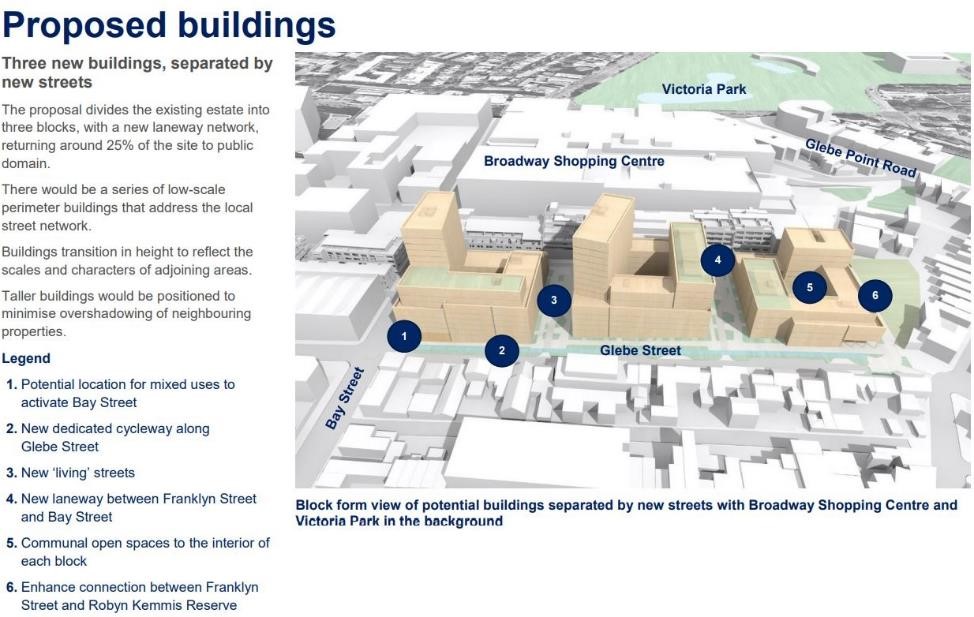
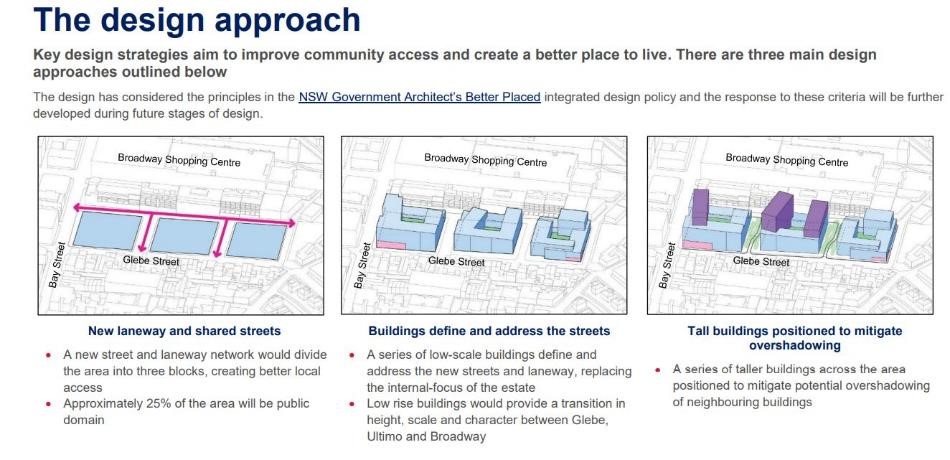
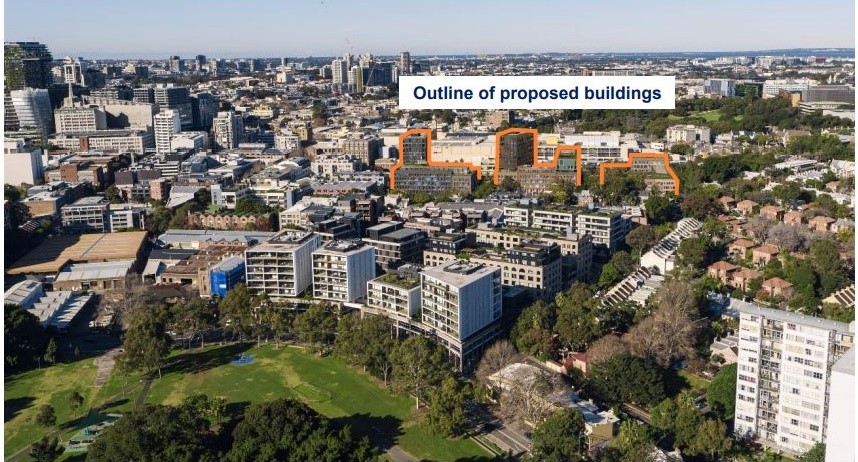
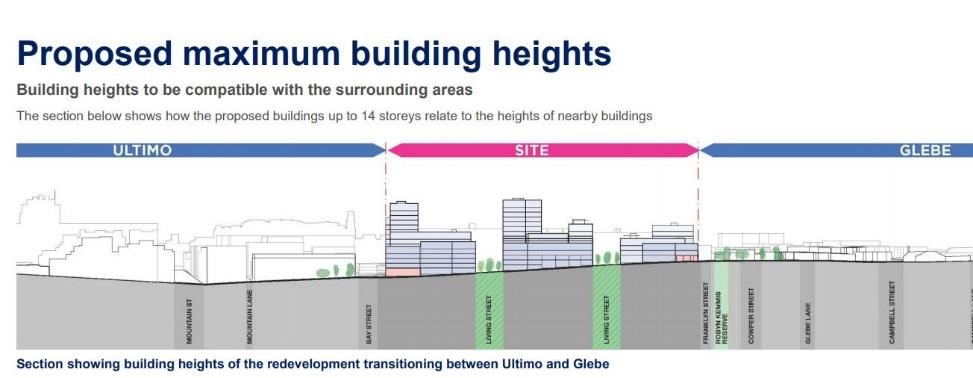
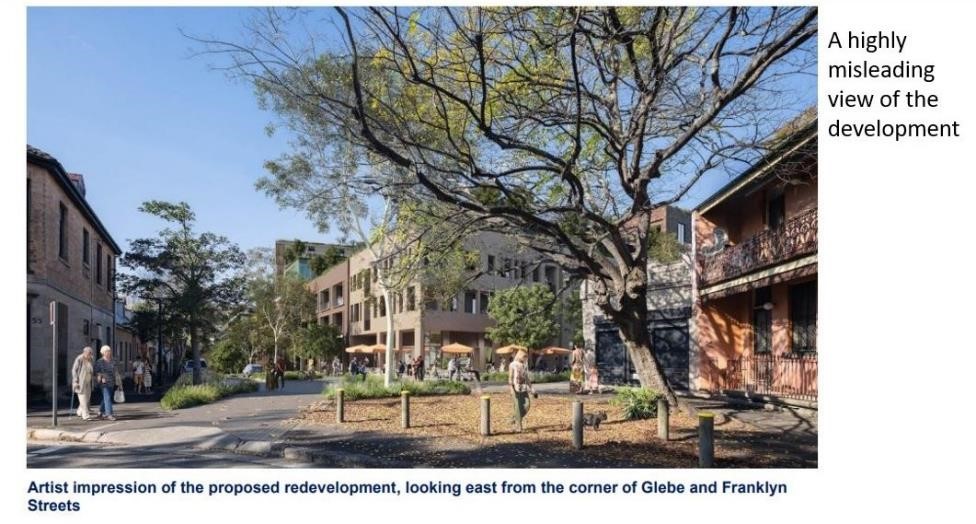
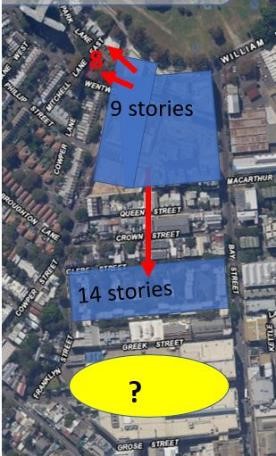
Figure 9 Aerial view of the precinct. 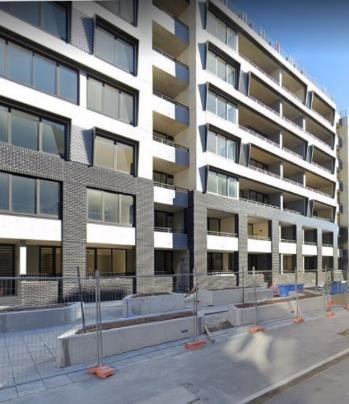
Figure 10 Elger St, Glebe.
LAHC envisage that the architecture of the Glebe affordable housing project which occupies the area bounded by Wentworth Park Rd, Bay St, Elger St and Cowper St (Figs 13 and 14) will spread east across Cowper St (there is a planning proposal currently before Council to remove two sites from the St Phillips heritage conservation area to allow the construction of two eight-storey buildings) and south to the 1.3-hectare Franklyn St estate where two 14-storey buildings are envisaged. Will a rezoning of the Broadway carparks follow at an even higher density?
The Society’s Response
The Society has provided a detailed response to the community consultation. It can be read in full on our website here:https://www.glebesociety.org.au/wp-content/uploads/Franklyn-St-Submission-to-LAHC-11-Dec-2020.pdf. Key points are that the concept is not acceptable because it:
- Reduces the existing open space and destroys the gardens. The existing open space should be retained.
- Demolishes a well-designed complex of social housing by the eminent architect Philip Cox working with John Richardson. It is profligate to demolish the Cox-Richardson complex. The units should be refurbished, ideally with advice from the original architects.
- In its scale and form it uses the Mezzo development as its model when it should be following the 2012 DCP and relating to the warehouse forms of Ultimo which it adjoins on Bay St and the Victorian low rise residential buildings of Glebe which it addresses on Glebe St and Franklyn St.
- Involves the relocation of long-term residents who have lived in the complex for many years.
- Only increases the provision of social housing by 22 units.
- Destroys the amenity of the residents of Greek St, particularly through the loss of winter sun and overshadowing to north facing Greek St apartments, particularly to lower-level units.
The consultation document indicates that the next steps over 2021 to 2022 will be:
- LAHC submit a planning proposal for a rezoning to Sydney City Council.
- The City of Sydney place the proposal on public exhibition.
- The planning proposal is assessed by the Council and the Department of Planning and Industry.
- Following planning proposal approval a development application is prepared.
- Development application submitted and placed on public exhibition.
The Society has advised the LAHC that good planning is not based on, and great cities are not created by, landowners determining what density they wish for with their developments and then obtaining rezoning to accommodate their desires.
Disregarding the 2012 City of Sydney DCP and strategic planning objectives about good urban design and heritage and relying on a rezoning to insert an overdevelopment into a heritage conservation zone is not good practice and contrary to the public interest. LAHC are one of the city’s largest landholders. On occasion they, and their predecessor agencies, have led the way in good design and urban planning. They should emulate this standard at Franklyn St by working within the existing controls and ideally refurbishing the existing buildings.








There are no comments yet. Please leave yours.